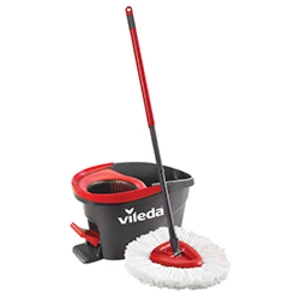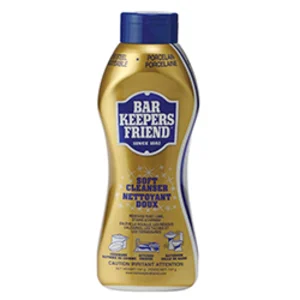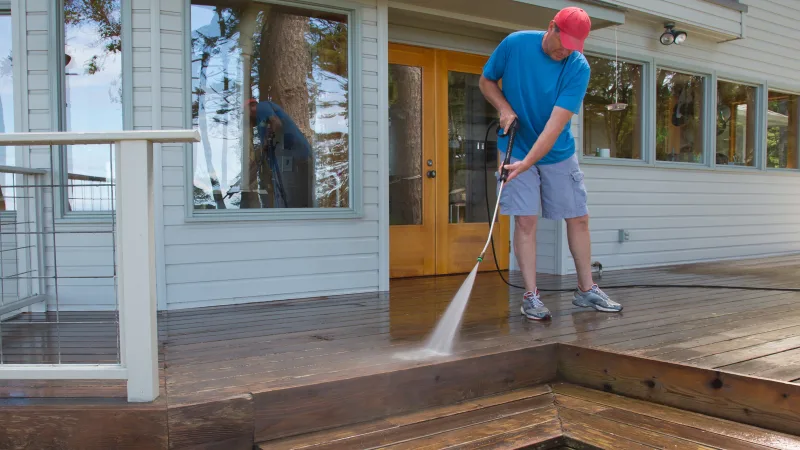Here's How to Prepare Your Home for Wildfires
Canada experiences an average of 8,400 wildfires per year, which burn approximately 2.5 million hectares of land.
Some wildfires threaten communities and homes, forcing evacuation and potentially destroying property. If you live in a region at risk of wildfires, here’s what you can do to help reduce that risk to your property and prepare for emergencies.

Wildfire Mitigation
A good wildfire mitigation strategy includes long-term and emergency planning.
Long-term Planning
Wildfire risk mitigation strategies include both ongoing maintenance and major renovations. Some of these updates and upgrades are simple DIY tasks, while others may require professional assistance.


TIP: You don’t have to tackle your wildfire damage prevention action list all at once. Prioritize upgrades based on need and budget.
Home Protection Products
Gear up with essential equipment and supplies so you can make home improvements to reduce wildfire risk to your property.
TIP: Prioritize wildfire mitigation to your home itself, then move on to the area within 10 metres of the home. This will have the greatest impact on risk mitigation.
Emergency Preparedness
Here’s What to Do if There’s a Wildfire Evacuation Alert or Order
You may only have hours to prepare following a wildfire warning. Once an evacuation order is issued, you must leave quickly. Plan ahead so you can make the most of your time.

TIP: Don’t leave water sprinklers or water running on your property, as this can negatively impact water pressure for crucial firefighting equipment.
Emergency Kit Essentials
Here’s What You’ll Need For Up to 3 Days Away from Home
Create Your Emergency Kit
If you need to evacuate, you may not have time to gather essential items. Plan ahead and keep everything together in a large bin, backpack or hockey bag, so you can quickly load your vehicle and head out. Here are some of the essential things you can add to your kit.
TIP: Keep copies of important documents (i.e. ID, home insurance, veterinary records), along with a spare credit card and/or cash, in a waterproof case stashed inside one of your emergency kits.
Wildfire Mitigation
A good wildfire mitigation strategy includes long-term and emergency planning.
Long-term Planning
Wildfire risk mitigation strategies include both ongoing maintenance and major renovations. Some of these updates and upgrades are simple DIY tasks, while others may require professional assistance.


TIP: You don’t have to tackle your wildfire damage prevention action list all at once. Prioritize upgrades based on need and budget.
Home Protection Products
Gear up with essential equipment and supplies so you can make home improvements to reduce wildfire risk to your property.
TIP: Prioritize wildfire mitigation to your home itself, then move on to the area within 10 metres of the home. This will have the greatest impact on risk mitigation.
Emergency Preparedness
Here’s What to Do if There’s a Wildfire Evacuation Alert or Order
You may only have hours to prepare following a wildfire warning. Once an evacuation order is issued, you must leave quickly. Plan ahead so you can make the most of your time.

TIP: Don’t leave water sprinklers or water running on your property, as this can negatively impact water pressure for crucial firefighting equipment.
Emergency Kit Essentials
Here’s What You’ll Need For Up to 3 Days Away from Home
Create Your Emergency Kit
If you need to evacuate, you may not have time to gather essential items. Plan ahead and keep everything together in a large bin, backpack or hockey bag, so you can quickly load your vehicle and head out. Here are some of the essential things you can add to your kit.
TIP: Keep copies of important documents (i.e. ID, home insurance, veterinary records), along with a spare credit card and/or cash, in a waterproof case stashed inside one of your emergency kits.
Wildfire Cleanup
Before attempting any cleanup, be sure local fire officials have given the all-clear to re-enter your home. Here’s how to deal with the aftermath of a wildfire, from assessment and damage control to cleaning and repairs.
Returning Home After a Wildfire
Here’s How to Assess & Repair Wildfire Damage
Be cautious when returning home after a wildfire. Be aware that hot spots can flare up and that the structural integrity of your home may be damaged from fire and/or water. Ash, smoke and mould can impact air quality; ash pits can be a hazard. Here’s what to do once it’s safe to enter your home.

TIP: Contact your home insurance agent for immediate advice. They may be able to provide assistance with repairs and living expenses.
Safe Cleanup & Repairs
Before beginning your cleanup, make sure you have personal protective gear to stay safe. This includes a KN95 respirator or N95 dust particulate mask with nose clip, coveralls, eye protection, rubber and leather gloves, and safety boots.

Home Cleanup Products
Make your fire-, smoke- and water-damaged house a home again with these essential cleaning supplies, tools and equipment.
TIP: Break cleaning and repair tasks into small steps, so that progress is measurable each day. Recovering after a disaster is stressful and slow-moving, so remember to recognize your daily progress.
Here’s How to Clean Your Outdoor Space After a Wildfire
Outdoor spaces can be damaged by fire, soot, ash and residue from firefighting materials. Fire restoration contractors must be hired to remediate fully destroyed property, but if property damage is minor, here are 5 outdoor tasks homeowners can DIY.

TIP: Always wear personal protective equipment (PPE), including a KN95 or N95 respirator, when cleaning up after a wildfire.














